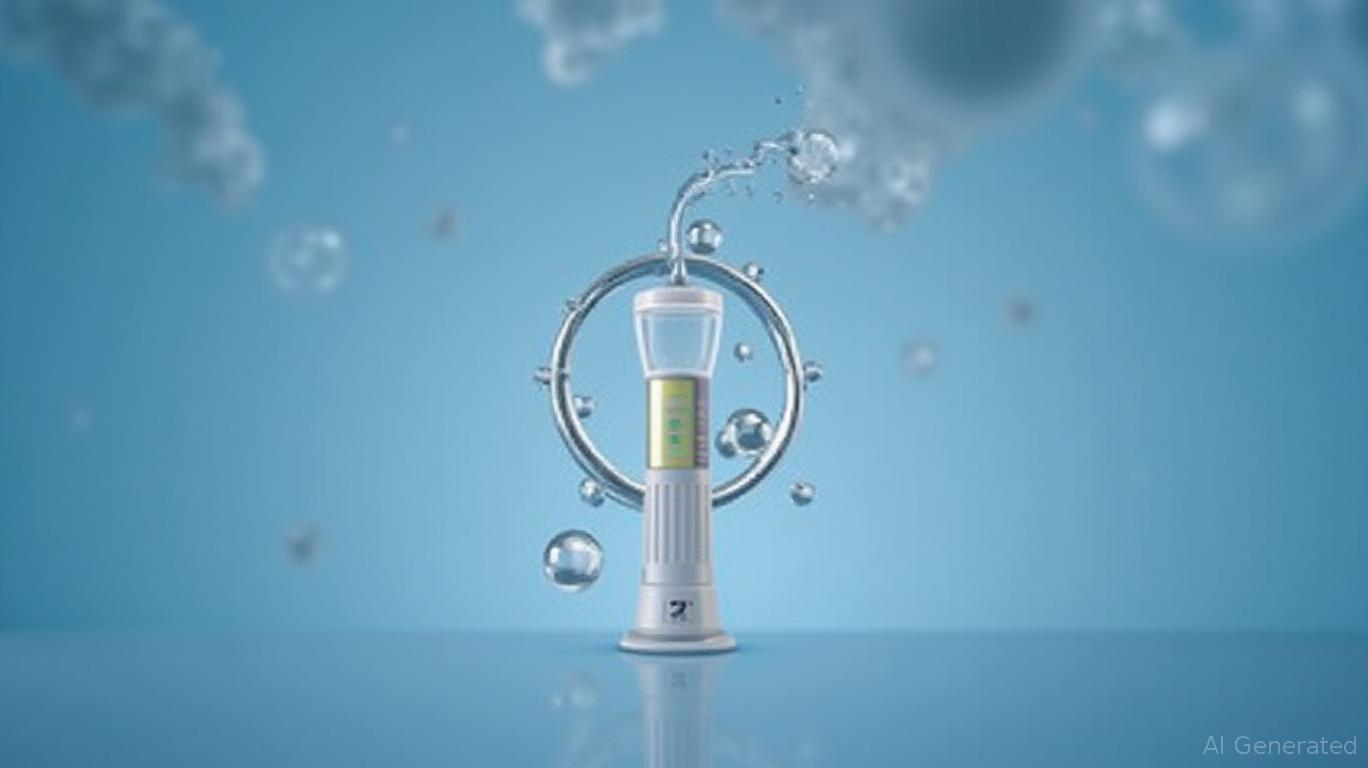AbbVie's Strategic Pivot: Navigating Patent Cliffs and Building Diversified Growth
The expiration of Humira's patents in 2023 marked a pivotal moment for AbbVie (ABBV), the pharmaceutical giant once reliant on the world's best-selling drug. Yet, as highlighted in its recent presentation at the Goldman Sachs Healthcare Conference, AbbVie has positioned itself to thrive beyond Humira's dominance. By accelerating growth in immunology, oncology, neuroscience, and aesthetics, while maintaining disciplined financial stewardship, the company aims to sustain profitability and dividend stability. This analysis evaluates whether these strategies can deliver long-term value for investors.
The Immunology Engine: SKYRIZI and RINVOQ Lead the Charge
At the core of AbbVie's post-Humira growth is its immunology portfolio, where SKYRIZI (risankizumab) and RINVOQ (upadacitinib) are outperforming competitors in inflammatory diseases like Crohn's and ulcerative colitis. Their superior endoscopic disease control, as demonstrated in trials like SEQUENCE, has solidified their place in formularies despite biosimilar competition from STELARA (ustekinumab).
Ask Aime: How will AbbVie's diversified growth in immunology, oncology, neuroscience, and aesthetics affect its profitability and dividend stability in the post-Humira era?

While J&J's TREMFYA and oral IL-23 inhibitors pose threats, AbbVie is countering with differentiation: SKYRIZI's every-eight-week dosing and RINVOQ's oral formulation. Phase III data for RINVOQ in hidradenitis suppurativa (HS) by 2026 could further expand their reach. Additionally, the acquisition of Nimble Therapeutics—pioneering oral peptides—adds early-stage innovation, signaling a long-term pipeline beyond current blockbusters.
Oncology and Neuroscience: Building New Growth Pillars
AbbVie's oncology pipeline, bolstered by Immunogen's ADC (antibody-drug conjugate) expertise, targets high-unmet-need cancers like ovarian, colon, and lung malignancies. The BCMA bispecific Entantamig (formerly MOR208) is nearing Phase III completion, with potential as an outpatient treatment for multiple myeloma. Combined with strong sales of VENCLEXTA and IMBRUVICA, oncology now contributes meaningfully to revenue, with 2024 guidance raised by $200 million.
In neuroscience, AbbVie aims to surpass Roche as the market leader by 2025. Its Parkinson's portfolio includes Vylept, a subcutaneous infusion therapy with Medicare reimbursement expected late 2025, and tirvapadone, an oral candidate set for 2026 approval. Collaborations with Gilgamesh (psychoplastics) and Aliyada (Alzheimer's antibodies) further diversify its pipeline. The neuroscience division's potential is underscored by Vylept's success in international markets and its avoidance of invasive surgeries, a key patient preference.
Financial Fortitude: Margin Discipline and Dividend Resilience
AbbVie's Q1 2025 results were a testament to its financial acumen. Revenue beat estimates by $550 million, driven by ex-Humira sales growth of ~23%. Full-year guidance now projects $59.7 billion in revenue, with SKYRIZI/RINVOQ adding $900 million to growth. The 46.5% operating margin—despite a 0.5% IPR&D charge—reflects efficient capital allocation. Crucially, AbbVie maintains robust cash flow, enabling R&D investments and a dividend payout ratio below 50% of earnings. This bodes well for dividend stability, a key draw for income investors.
Strategic Initiatives: Beyond 2030
AbbVie's long-term bets include early-stage business development (BD) deals, with over 25 since 2024. The Gubra amylin therapy, targeting the $100–150 billion obesity market, exemplifies this strategy. By focusing on mechanisms like weight management, muscle retention, and bone health, Gubra could become a post-2030 growth driver.
The company also emphasizes policy engagement, advocating for trade deals and reforms that balance affordability with R&D incentives. Its confidence in competing under PBM reforms stems from historical precedents—such as the Inflation Reduction Act—where commercial pricing remained intact despite government channel discounts.
Risks and Challenges
- Pricing Pressures: While AbbVie's products offer clinical differentiation, U.S. regulators may still target high drug costs. The MFN rule's impact remains uncertain, though AbbVie's formulary success provides a buffer.
- Aesthetics Volatility: The filler market's decline due to consumer sentiment poses a near-term headwind, though Trinobot E's FDA submission (2025) offers hope for recovery.
- Biologic Competition: Biosimilars and new entrants like TREMFYA require relentless clinical validation to retain market share.
Investment Thesis: A Buy for Long-Term Growth
AbbVie's diversified pipeline, robust margins, and disciplined capital allocation position it to navigate Humira's patent cliff successfully. With ex-Humira sales growing at 20%+ and a dividend yield above 3%, the stock appears attractively valued at current levels. Key catalysts include Vylept's U.S. launch in 2026, tirvapadone's approval, and Gubra's obesity platform.
Recommendation: Investors seeking stability and growth should consider ABBV. While near-term risks like aesthetics headwinds and regulatory scrutiny exist, the company's multi-year pipeline and financial resilience justify a hold-to-buy rating. Monitor Q3 2025 updates on RINVOQ's HS data and Vylept's reimbursement progress for further confidence.
In sum, AbbVie's strategic pivot—from a Humira-dependent giant to a diversified biopharma leader—appears on track. For patient investors, this could be a rare opportunity to buy a dividend stalwart at a discounted valuation, with catalysts aligned for the next decade.

Comments
No comments yet